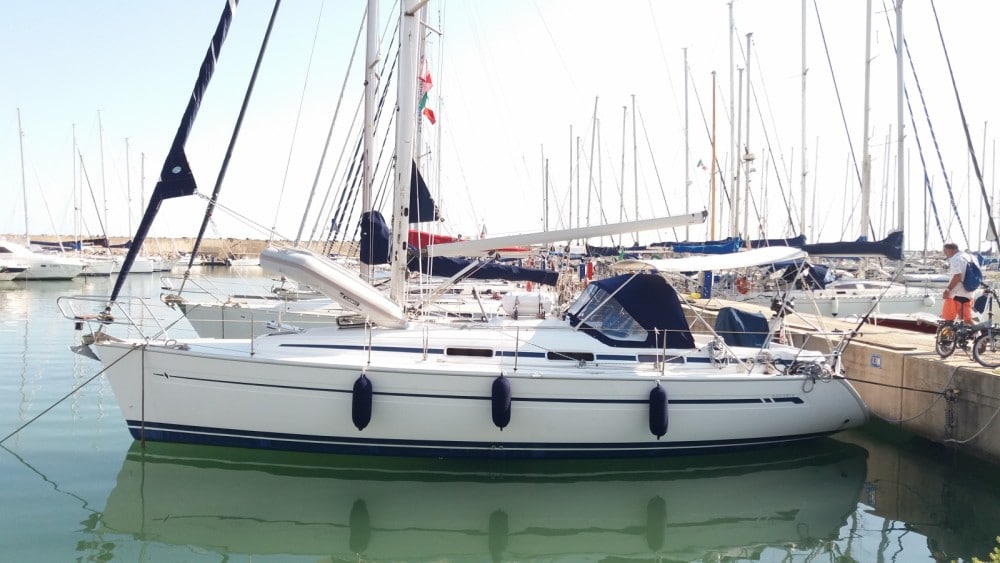J’ai utilisé un V…. hélice fixe à deux pales pendant environ cinq ans. Je n’ai jamais eu de problème avec ça. Cependant, je n’aimais pas le fait que lorsque je naviguais, je devais avoir la conduite en prise et avoir entendu des histoires à propos de la navigation rapide, cela pouvait en fait tourner le moteur en arrière et aspirer l’eau (cela ne m’est jamais arrivé cependant). J’ai essayé plusieurs fois de laisser le rapport au point mort, comme certains l’ont recommandé, mais le moteur tremblait beaucoup et je ne me sentais pas à l’aise avec cela. On m’a expliqué que cette secousse était un symptôme de la grande quantité de traînée que l’hélice fixe avait réellement (ce qui semble plus que je ne l’aurais pensé).
Je voulais aussi réduire la traînée en naviguant (c’est amusant d’aller vite quand les conditions sont bonnes).
J’ai fait énormément de recherches sur les hélices à plumes par rapport aux hélices repliables et comme mon bateau se comporte comme un rêve à la fois en marche avant et arrière, je voulais garder ou peut-être améliorer ces caractéristiques. J’ai décidé que l’hélice à plumes était le seul moyen.
J’ai commencé à rechercher et à comparer toutes les hélices de mise en drapeau que j’ai pu trouver et j’étais au salon nautique de Düsseldorf trois années de suite, dont j’ai passé beaucoup de temps à chercher et inspecter «sur le terrain» les différents fabricants au montre.
J’ai pris ma décision finale en fonction de ce qui était dans mon esprit l’hélice la mieux conçue, également la plus chère, c’est souvent le cas mais pas toujours.
Quoi qu’il en soit, j’ai monté la nouvelle hélice Ewol en juin dernier et bien que je pense que je voudrais la tordre un peu (une fonctionnalité extrêmement agréable avec l’Ewol) car j’arrive assez facilement et rapidement au haut de la vitesse maximale. Sans le peaufiner, j’ai une bien meilleure vitesse de pointe, j’ai la même vitesse de croisière que le V…. hélice. à 2000 tr / min. L’inverse est meilleur avec l’Ewol, je pense parce que c’est trois lames au lieu du V…. deux. L’expérience de la voile est très perceptible et me fait vraiment sourire. Surtout dans l’air léger. Le bateau me semble plus «glissant». Bien sûr, il est difficile de documenter avec des preuves tangibles, mais je crois que j’obtiens un bon 1 à 1,5 noeuds dans des vents allant jusqu’à 20 noeuds.
L’été prochain, je vais le modifier un peu et faire un rapport.
J’ai aussi payé un supplément pour faire polir l’hélice (en pensant que je la garderais propre avec un tampon 3M). C’était contre la recommandation d’Ewol. C’était une erreur, donc cet hiver, je vais rude éprouver un peu et utiliser la peinture qu’ils recommandent.
Zai
Original Text
I used a V…. two blade fixed propeller for about five years. Never had any problems with it. However I didn’t like the fact that when sailing I had to have the drive in gear and have heard stories about when sailing fast it can actually turn the engine over backwards and suck in water (never happened to me though). I tried a few times to leave the gear in neutral, as some have recommended, but the engine would shake quite a lot and I didn’t feel comfortable with that. It was explained to me that this shaking was a symptom of the large amount of drag that the fixed propeller actually has (which seems more than I would have thought).
Also I wanted to reduce drag when sailing (it is fun to go fast when conditions are right).
I did a huge amount of research about feathering vs. folding propellers and since my boat handles like a dream both in forward and reverse, I wanted to keep or maybe improve these characteristics. I decided that the feathering prop was the only way.
I started to research and compare all of the feathering propellers I could find and was at the boat show in Dusseldorf three years in a row two of which I spent a good bit of time looking and inspecting « hands on » the various manufacturers at the shows.
I made my final decision based on what in my mind was the best engineered propeller, also the most expensive, but this is often the case but not always.
Any way I mounted the new Ewol propeller this last June and although I think I would like to teak it a bit (an extremely nice feature with the Ewol) as I am getting quite easily and quickly to the high end of the maximum rpm. Without tweaking it I have a much better top speed, I have the same cruising speed as the V…. prop. at 2000 rpms. Reverse is better with the Ewol, I think because it is three blades instead of the V…. two. The sailing experience is very noticeable and a really makes me smile. Especially in light air. The boat just seems more « slippery » to me. Of course it is difficult to document with hard evidence, but I believe I am getting a good 1 to 1.5 knots in winds up to 20 knots.
Next summer I will tweak it a bit and report back.
Also I paid extra to get the prop polished (thinking that I would just keep it clean with a 3m pad). This was against the recommendation of Ewol. It was a mistake, so this winter I will rough it up a bit and use the paint they recommend.
Zai






